Video of the Week:
Overwintering Geraniums
Vegetables:
Last Tomatoes of the Season
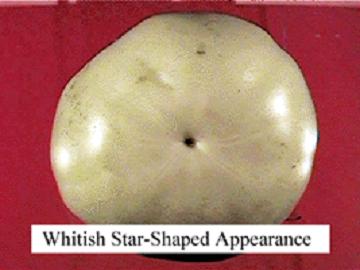
When harvesting fruit before a frost, separate tomatoes into three groups for storage: those that are mostly red, those that are just starting to turn, and those that are still green. Discard tomatoes with defects such as rots of breaks in the skin. Place the tomatoes on cardboard trays or cartons but use layers of newspaper to separate fruit if stacked. Occasionally a tomato may start to rot and leak juice. The newspaper will keep the juice from contacting nearby or underlying fruit. Store groups of tomatoes at close to 55 degrees as possible until needed. (Ward Upham)
Fall Planting of Asparagus and Rhubarb
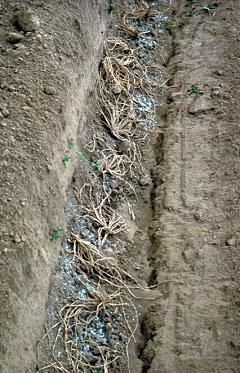
Prepare the soil and fertilize as you would in the spring. See the publication here for more detail on asparagus and here for more information on rhubarb.
Peppers from the Garden
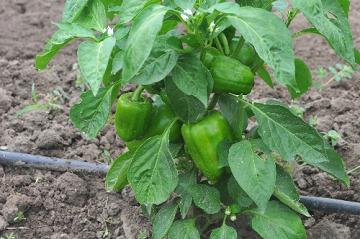
Measuring is much easier as the pieces are not frozen together in a clump. This method works equally well for hot peppers. (Ward Upham)
Fruit:
Reproducing Apple Trees
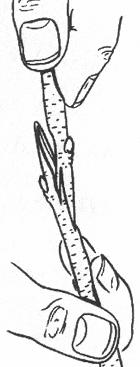
So, how do you reproduce an apple that is like the parent? The most common way is by grafting. Grafting is a procedure that joins two plants together. The upper part (on scion) becomes the top part of the tree, while the lower part (or stock) provides the root system of part of the trunk. Apples are relatively easy to graft. How to graft is beyond the scope of this newsletter, but local libraries should have materials that cover the procedure, or you can find an excellent publication on the web here. (Ward Upham).
Ornamentals:
Fall Colors of Trees
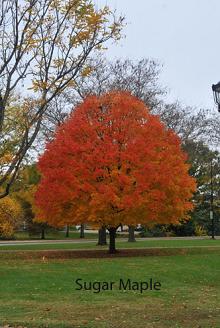
Specific plant pigments determine individual colors. Foliage derives its normal green color from chlorophyll, the substance that captures the energy of the sun. Other pigments produce fall colors. Reds and purples are caused by anthrocyanins, yellows by xanthophylls, and oranges by a combination of carotenes and xanthophylls. Browns are the result of tannins present in the leaf. Most of these substances are present throughout the growing season but are masked by the green produced by chlorophyll. Anthocyanins are the exception and are produced after the chlorophyll is destroyed in the fall.
If you have ever seen pictures of New England in the fall, you have probably wondered why trees in Kansas usually do not color as well. This difference is partly because of the tree species prevalent in New England. Certain oaks and maples naturally produce good color. Coloring is also influenced by the weather.
Warm, sunny days and cool nights are ideal for good color. The sunny days encourage photosynthesis and, thus, sugar accumulation in the leaves. As fall progresses, each leaf develops an abscission layer at the base of the petiole, or leaf stem, that prevents these sugars from being transported down the trunk to the roots for storage. This high sugar content in the leaves produces more intense colors. Cloudy days and warm nights prevent some of the sugar accumulation in the leaves and results in less vibrant colors.
Weather during other parts of the growing season also can have an effect. Heavy rains in the early spring or hot, dry weather during the summer can both have a deleterious effect on fall color.
The length of time a tree maintains fall color also depends on weather. Reds, yellows and oranges are short-lived when trees undergo frosts and freezes. (Ward Upham)
Fall Shrub Pruning
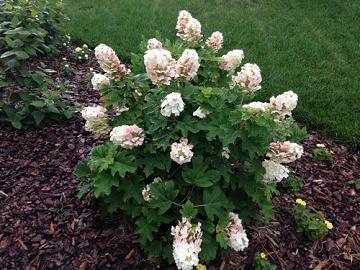
Honestly, I say the best time to prune is when you're ready to. Otherwise it gets put on the backburner and pretty soon you can't see out the windows of your house because the shrubs figuratively ate them.
Having said that, if you care about whether or not your flowering shrubs will bloom the next season (and the health of the platns), then there are a few other things to think about. Namely, what type of wood does your shrub bloom on? There are two answers to that query: new wood or old wood.
Plants that bloom on new wood can be pruned anytime. Their floral buds are set on fresh growth so pruning may help manage the size of the plant, but won't greatly inhibit the flower display. A great example of this is purple beautyberry (Callicarpa dichotoma). Left to its own devices, it will easily grow 8 to 10 feet tall. But with regular pruning (maybe even twice a year), it will stay less than 3 feet tall and still have a beautiful flower and berry display in the fall. Examples of plants that bloom on new wood include shrub roses, butterfly bush, and rose-of-sharon.
The other option is plants that grow on old wood. I learned this lesson the hard way after planting dwarf oakleaf hydrangeas (Hydrangea quercifolia 'Munchkin') and Judd viburnums (Viburnum x juddii) in my landscape a few years ago... before I knew much about critters, specifically rabbits, and their destructive habits. There I was, enjoying my newly planted beds from the kitchen window on a February morning when I noticed that ALL of my plants had been pruned off, leaving only sharp stubs of branches. I was angry, frustrated, and really sad that my plants may or may not survive. I was fortunate, all but one viburnum survived. However, they only put on vegetative growth that year, not a single flower. Bummer!
My solution to the rabbits was to make wire cages for each of my plants (I have a small hard - it was doable). Again, and quite unfortunately for the viburnums, I was a little late to the game. I managed to save the hydrangea blooms and had a beautiful display this year, but I didn't beat the rabbits to the viburnum and I only had one single, solitary inflorescence out of 10 plants this spring. I vow to get my plants protected earlier this year.
My point, however, is that to preserve the harvest (so to speak) you've got to know your plants and how they grow. If it's on old wood, wait until after the floral display to prune and then let them grow and set new floral buds the rest of the year. Other plants in this category: lilac, forsythia, flowering quince, mockorange, and spirea.
If you're not too worried about getting a floral show within the next year, go ahead and prune when you've got time. Especially if they are overgrown. A good rejuvenation pruning for shrubs can often do wonders in the landscape.
All of this advice applies to deciduous shrubs. Evergreen shrubs and trees are a whole different ballgame. If you're interested in learning more about that type of pruning, check out your local Extension resources or our K-State Horticulture Information Center website.
It's worth noting that, while lots of folks are thinking about pruning now, it may not be the best time for many shrubs. I've read several predictions that we might have a nice long fall (Yay!) and if that's the case, newly pruned shrubs may put on a flush of growth that won't have time to harden off before winter strikes (and this one may be a doozy). The best way to avoid this kind of damage is to just wait until late winter or early spring to do your pruning. Ahh! - a good reason to procrastinate. (Cheryl Boyer)
Contributors: Cheryl Boyer, Nursery Crops Specialist; Ward Upham, Extension Associate.
 RSS Feed
RSS Feed
